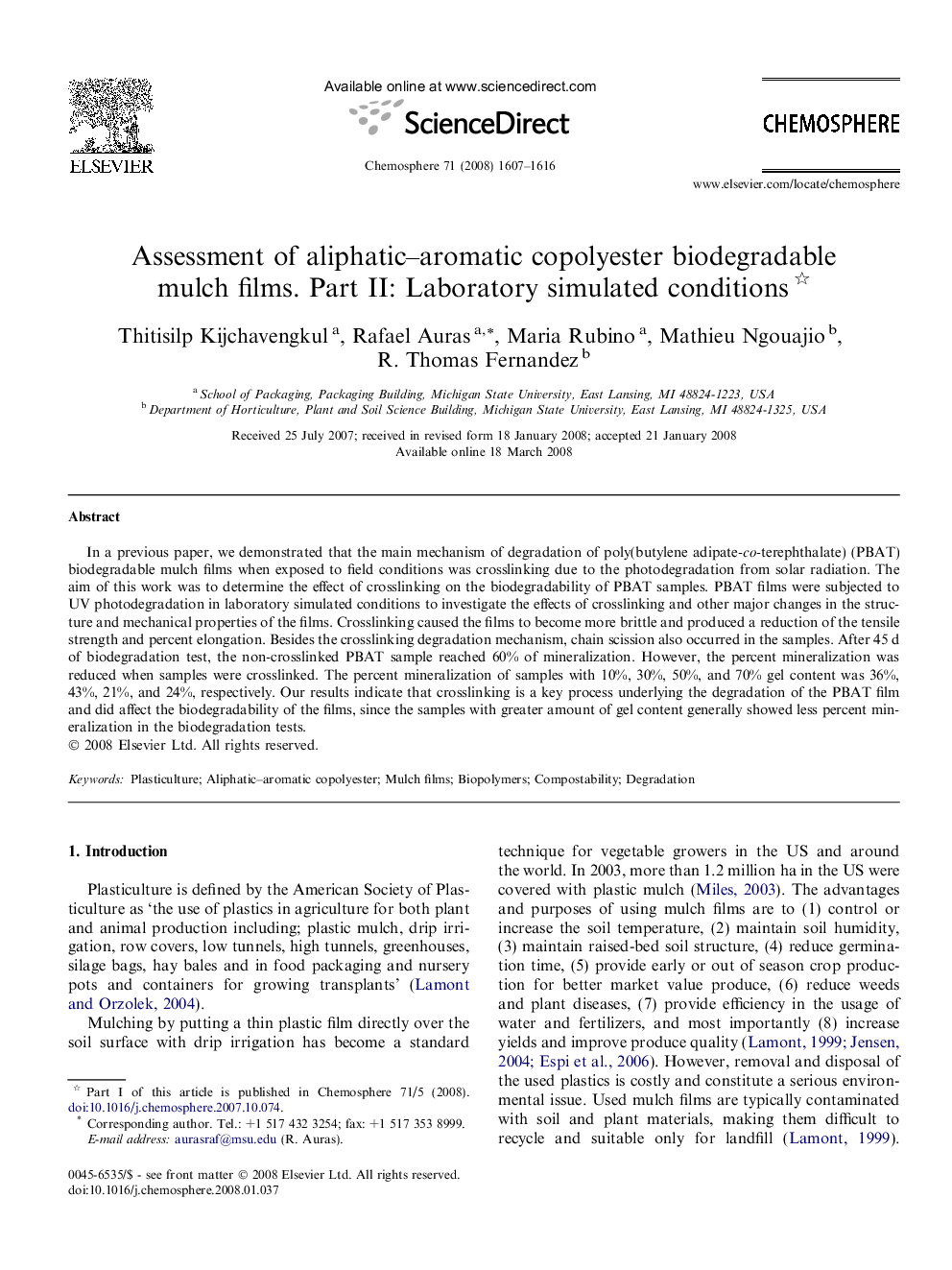| Article ID | Journal | Published Year | Pages | File Type |
|---|---|---|---|---|
| 4414197 | Chemosphere | 2008 | 10 Pages |
In a previous paper, we demonstrated that the main mechanism of degradation of poly(butylene adipate-co-terephthalate) (PBAT) biodegradable mulch films when exposed to field conditions was crosslinking due to the photodegradation from solar radiation. The aim of this work was to determine the effect of crosslinking on the biodegradability of PBAT samples. PBAT films were subjected to UV photodegradation in laboratory simulated conditions to investigate the effects of crosslinking and other major changes in the structure and mechanical properties of the films. Crosslinking caused the films to become more brittle and produced a reduction of the tensile strength and percent elongation. Besides the crosslinking degradation mechanism, chain scission also occurred in the samples. After 45 d of biodegradation test, the non-crosslinked PBAT sample reached 60% of mineralization. However, the percent mineralization was reduced when samples were crosslinked. The percent mineralization of samples with 10%, 30%, 50%, and 70% gel content was 36%, 43%, 21%, and 24%, respectively. Our results indicate that crosslinking is a key process underlying the degradation of the PBAT film and did affect the biodegradability of the films, since the samples with greater amount of gel content generally showed less percent mineralization in the biodegradation tests.
